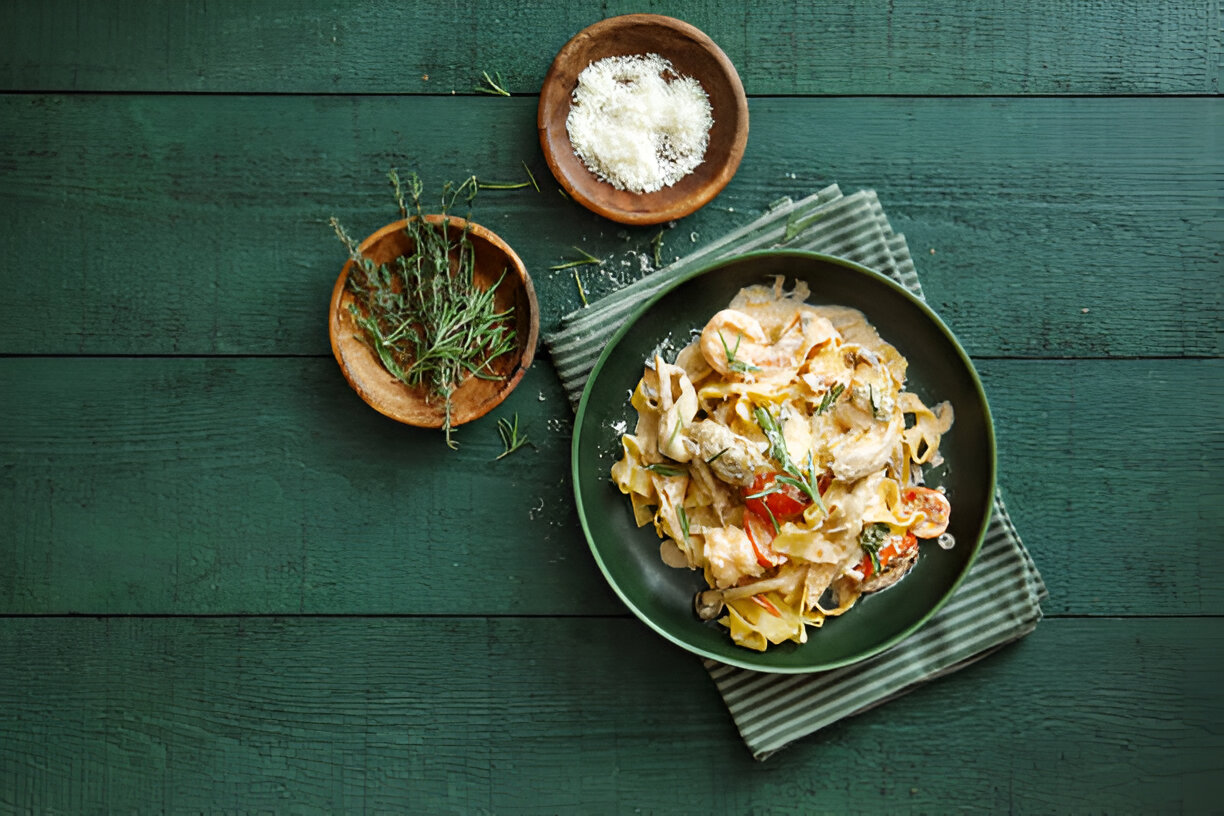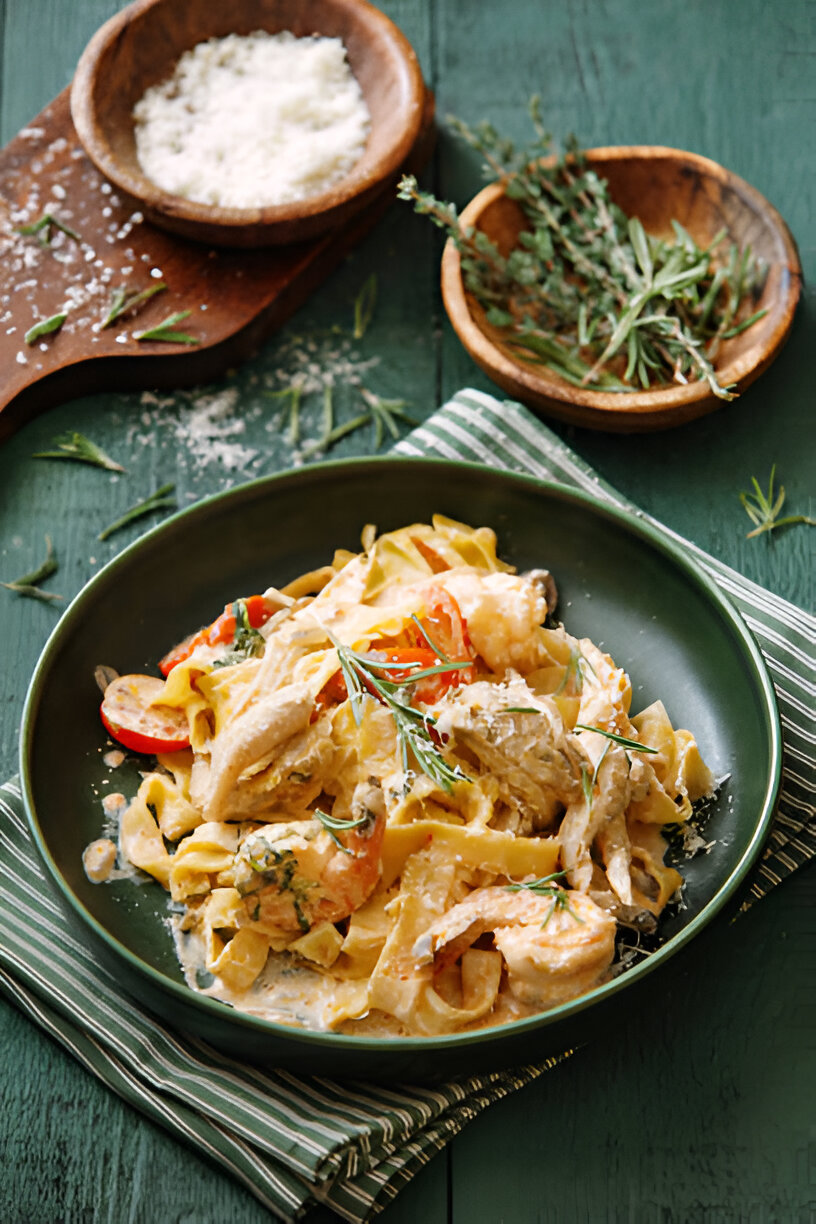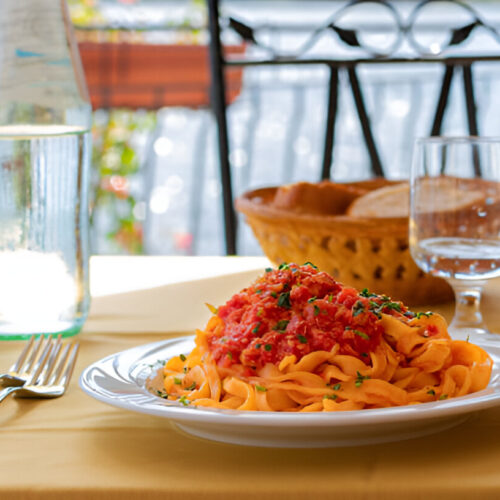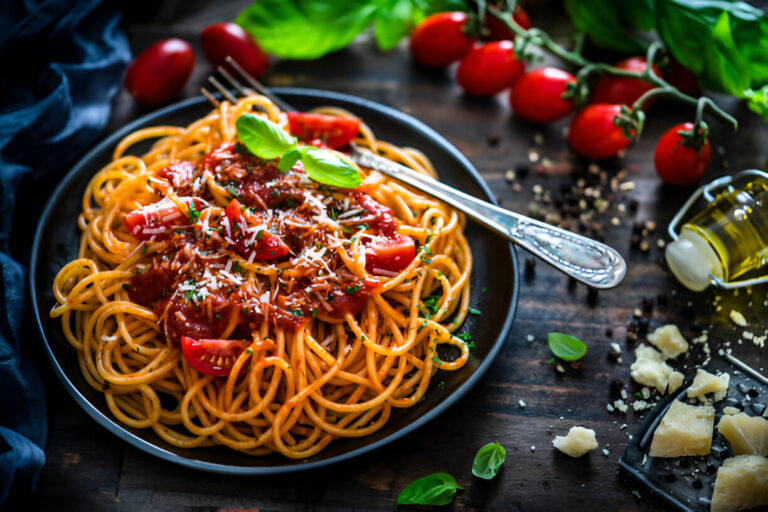Discover Pasta Italy: History, Types, and Recipes Guide
Italian pasta culture is a vibrant tapestry woven into the very fabric of the nation’s culinary identity. From the bustling streets of Naples to the sophisticated kitchens of Bologna, pasta plays a pivotal role in Italian cuisine, symbolizing both nourishment and tradition. With an impressive array of shapes, sizes, and textures—from spaghetti and fettuccine to ravioli and gnocchi—pasta represents regional diversity and local ingredient availability, reflecting the rich agricultural heritage of Italy.
Moreover, pasta dining transcends mere consumption; it is an experience steeped in social interactions and communal bonds. Meals featuring pasta often serve as an occasion for families and friends to come together, fostering connections and creating memories around the table. The simple act of sharing a bowl of pasta, paired with a robust sauce or a light drizzle of olive oil, captures the essence of Italian hospitality and the joy of togetherness. In this exploration of “Pasta Italy,” we will delve into its storied history, regional varieties, beloved dishes, and the intricate art of cooking pasta, inviting readers to embrace this delicious aspect of Italian culture.

1. History of Pasta in Italy
The roots of pasta can be traced back to Ancient Rome, where early versions of this staple made their debut, believed to be derived from a mixture of water and flour. Over the centuries, pasta’s significance grew as it became a versatile food that adapted to the tastes and agricultural practices of different regions. The introduction of durum wheat in the 8th century significantly revolutionized pasta production, notably improving its quality and shelf life. Durum wheat flour remains the primary ingredient in the refined pasta we enjoy today.
As pasta traveled through time, so did its shapes and sauces. In the Middle Ages, with the influence of Arabic cuisine, softer forms of pasta began to emerge, often stuffed with ingredients like meat and cheese—many of which are staples in contemporary Italian dishes. By the Renaissance, various pasta shapes were firmly established, with regional specialties beginning to develop. This transformation is evident in the rich landscape of pasta today, embodying centuries of culinary evolution and cultural exchange, resulting in an extensive variety that continues to delight palates worldwide.
2. Types of Pasta
Pasta can be broadly categorized into two main types: fresh pasta and dried pasta. Each variety has its own unique texture, flavor, and culinary applications, contributing to the delightful diversity of Italian cuisine.
Fresh Pasta: Often made from a simple dough of flour and eggs, fresh pasta is known for its delicate texture and rich flavor. Because of its high moisture content, it cooks faster and typically has a softer bite. Traditional forms of fresh pasta include tagliatelle, ravioli, and lasagna sheets, making it an ideal choice for rich, creamy sauces that enhance these exceptional qualities.
Dried Pasta: This type of pasta is made using durum wheat semolina, giving it a firmer texture that holds up well during cooking and is typically used for dishes with robust sauces. Dried pasta is beloved for its long shelf life and ease of preparation. Common dried varieties include spaghetti, penne, and fusilli, each offering a unique shape that pairs beautifully with different types of sauces, allowing for endless culinary creativity in Italian kitchens.

3. Regional Pasta Dishes
The culinary landscape of Italy is incredibly diverse, with each region boasting its own distinctive pasta dishes that reflect local ingredients, traditions, and flavor preferences. These regional specialties highlight how pasta is not just a dish but a canvas for the rich storytelling of Italian culture and heritage.
3.1. Northern Italy
In the northern regions of Italy, pasta dishes often showcase rich sauces and local ingredients. One iconic dish is Pesto alla Genovese, originating from Genoa. This vibrant sauce combines fresh basil, garlic, pine nuts, and Parmigiano-Reggiano cheese, creating a perfect complement to pasta like trenette or trofie. Another beloved specialty is Ravioli, which can be filled with various ingredients, including meat, cheese, or seasonal vegetables. Lasagna, layered with béchamel and ragu, is another hallmark of Northern Italian cuisine, often served during festive occasions and family gatherings.
3.2. Central Italy
Central Italy is known for its robust flavors and simple ingredients, creating dishes that celebrate quality over complexity. Spaghetti Aglio e Olio is a stunning example, made with garlic, olive oil, and a hint of chili, showcasing how few ingredients can pack a flavorful punch. Another classic is Amatriciana, a sauce made with guanciale, tomatoes, and Pecorino Romano cheese, typically served with bucatini pasta. These dishes not only tantalize the taste buds but also reflect the traditions and regional ingredients of Central Italy.
3.3. Southern Italy
In Southern Italy, pasta dishes often incorporate fresh vegetables and seafood, giving them a unique and vibrant profile. A beloved specialty is Orecchiette con Cime di Rapa, where the ear-shaped pasta is paired with turnip tops, garlic, and anchovies, creating a hearty and nutritious meal. Pasta alla Norma, originating from Sicily, features eggplant, tomato sauce, and ricotta salata, capturing the essence of the region’s agricultural bounty. These dishes celebrate the bold flavors that are characteristic of Southern Italian cuisine.
4. The Art of Cooking Pasta
Cooking pasta to perfection is a cherished skill in Italian kitchens, and achieving the ideal al dente texture requires attention to detail. Understanding the right techniques can significantly elevate any pasta dish.
Proper Water-to-Pasta Ratio: The key to cooking pasta is ensuring there is enough water to allow it to move freely. A general rule is to use 4 to 6 quarts of water per pound of pasta. This helps maintain the temperature of the water when the pasta is added and ensures even cooking.
Timing and Testing Doneness: Cooking time varies depending on the type and thickness of the pasta. Always refer to the package instructions, but for the best results, taste the pasta a minute before the recommended cooking time to check for doneness. The ideal texture is firm yet tender, offering a slight resistance when bitten.
Importance of Salt in Boiling Water: Adding salt to boiling water not only enhances the flavor of the pasta but also helps prevent it from sticking together. A well-salted pot of water should taste like the sea, creating a flavor foundation that permeates the pasta during cooking.
4.1 Sauce Pairing
Choosing the right sauce for your pasta type is crucial in Italian cuisine. Generally, delicate sauces complement fresh pasta while robust sauces are better suited for dried pasta.
- Fresh Pasta: Pairs well with light sauces such as sage and brown butter, or simple tomato sauce that won’t overwhelm its delicate texture.
- Dried Pasta: Works best with hearty sauces like Bolognese, marinara, or pesto that cling to the pasta’s more textured surface.
4.2 Serving Suggestions
Presentation plays a significant role in enjoying pasta dishes. To enhance the dining experience, consider the following serving techniques:
- Garnishing: Fresh herbs such as basil or parsley, and a generous sprinkle of Parmigiano-Reggiano cheese can elevate the visual appeal.
- Serving Temperature: Always serve pasta immediately after cooking for the best taste and texture, ensuring it stays warm throughout the meal.
5. Popular Pasta Recipes
Bringing the tastes of Italy into your kitchen is a rewarding experience, and there’s no better way to immerse yourself in the culture than by trying your hand at these classic recipes.
5.1. Classic Italian Pasta Recipe: Spaghetti Carbonara
Ingredients:
- 400g spaghetti
- 150g pancetta
- 2 large eggs
- 100g Pecorino Romano cheese
- Salt and black pepper
Directions:
- Cook spaghetti in salted boiling water until al dente.
- Meanwhile, in a pan, render the pancetta until crispy.
- In a bowl, whisk together eggs and cheese until well combined.
- Once the pasta is cooked, reserve some pasta water and drain it.
- Add pasta to the pan with pancetta, remove from heat, and quickly mix in the egg and cheese mixture.
- If needed, add a little reserved pasta water to achieve desired creaminess.
- Season with salt and freshly cracked black pepper and serve immediately.
Advice: For a vegetarian variation, consider substituting the pancetta with sautéed mushrooms or smoked tofu for a rich flavor.
5.2. Regional Specialty: Pesto alla Genovese
Ingredients:
- 400g pasta (usually trofie or trenette)
- 50g basil
- 30g pine nuts
- 2 cloves garlic
- 100ml olive oil
- 50g Parmigiano-Reggiano cheese
Directions:
- Begin by preparing the pesto: in a mortar and pestle or food processor, combine basil, pine nuts, and garlic.
- Gradually add olive oil while blending until smooth.
- Finish with Parmigiano-Reggiano cheese, and season to taste with salt.
- Cook pasta according to package instructions until al dente, then drain.
- Toss the hot pasta with the pesto, adding a small amount of pasta water if necessary to help it coat.
Advice: For those with nut allergies, sunflower seeds or pumpkin seeds can be used as substitutes, and the pesto can be stored in an airtight container for up to a week in the refrigerator.
6. Pasta Pairings and Wine Suggestions
The delightful experience of enjoying pasta is further enhanced by pairing it with the right wine. Here are some suggestions to elevate your dining experience:
- Red Wines: Robust sauces, such as Bolognese or Arrabbiata, pair beautifully with rich red wines like Chianti or Barbera. Their structure complements the hearty flavors.
- White Wines: Lighter pasta dishes, such as those made with seafood or olive oil, are best accompanied by crisp white wines like Pinot Grigio or Verdicchio, which enhance the freshness of the ingredients.
- Regional Pairings: Consider choosing wines from the region where the dish originates to enhance authenticity, such as a Sicilian Nero d’Avola with Pasta alla Norma.
Conclusion
Through this exploration of pasta, we’ve uncovered its deep significance within Italian culture, from its storied history to regional variations and influential cooking techniques. Pasta is not just food; it embodies the heart and soul of Italy, inviting all to gather, share, and celebrate the joy of delicious, home-cooked meals.
FAQs
As interest in pasta continues to grow, many questions arise regarding its preparation and significance in Italian culinary tradition. Here are some common inquiries:
- What is the difference between fresh and dried pasta? Fresh pasta is made with eggs and has a softer texture, while dried pasta is made with durum wheat and holds its shape better during cooking.
- Why is pasta popular in Italy? Pasta is a staple in Italian cuisine due to its versatility, affordability, and the sense of community it fosters during shared meals.
- How do you make pasta from scratch? Begin with flour and eggs, mix and knead until a smooth dough forms. Roll it out or shape it into desired pasta forms, then cook as usual.
- What is the best water-to-pasta ratio? A good rule is to use 4 to 6 quarts of water per pound of pasta to allow it to cook evenly without clumping.

pasta italy
Equipment
- 1 large pot
- 1 colander
- 1 skillet or frying pan
- 1 wooden spoon
- 1 measuring spoons
- 1 chef's knife
- 1 cutting board
Ingredients
- 400 g spaghetti
- 6 cloves garlic, thinly sliced
- 60 ml extra virgin olive oil
- 1 teaspoon red pepper flakes Adjust to taste
- 1/2 teaspoon salt
- 1/4 teaspoon black pepper
- 1/4 cup fresh parsley, chopped For garnish
- to taste grated Parmesan cheese Optional, for serving
Instructions
- Bring a large pot of salted water to a boil. Add the spaghetti and cook according to package instructions until al dente. Reserve 1 cup of pasta water, then drain the pasta in a colander.
- While the pasta is cooking, heat the olive oil in a skillet over medium heat. Add the sliced garlic and sauté until golden, being careful not to burn it (about 2-3 minutes).
- Stir in the red pepper flakes, salt, and black pepper, and sauté for an additional minute.
- Add the drained pasta to the skillet, tossing it in the garlic oil until evenly coated. If the pasta seems dry, add small amounts of reserved pasta water until the desired consistency is reached.
- Remove from heat and stir in the chopped parsley.
- Serve immediately with grated Parmesan cheese on top if desired.







